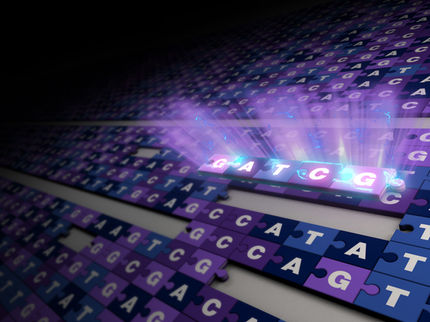A Powerful New Tool for Decoding Gene Functions in Mammals and Man
A collaborative project between American and Chinese researchers developed a way to study the function of genes in mice and man by using a moveable genetic element from moths, according to a report in the journal Cell.
"We know how many genes are in the mammalian genome, but that does not tell us how they carry out their jobs," said senior author Tian Xu, Professor and Vice Chair of Genetics at Yale University School of Medicine and a Howard Hughes Medical Institute Investigator. "We have found a way to systematically inactivate genes in the mouse genome so we can understand the functions of these genes."
After sequencing the human and mouse genomes, many scientists have shifted their attention to determining the function of all of those genes. The strategy is to mutate each gene, to observe the consequences, and investigate the molecular mechanisms. In the past two decades, only a small percentage of the genes shared by mice and humans have been analyzed in detail.
Genetic elements, called transposons, move from place to place in the DNA and allow material to be inserted or relocated. Bacteria swap antibiotic-resistance genes with transposons. Scientists have tailored this natural gene shuffling technique to insert genes and to mutate genes in fruit flies and simple organisms to learn the function of individual genes. Transposons have proved to be valuable genetic tools for many organisms, but not for vertebrates and mammals. General application in mouse genetics was limited as they travel at low frequencies to limited locations, and had little capacity to carry DNA fragments. It took Xu's team six years to develop an efficient tool for genetic manipulations in vertebrates and mammals.
Xu and his colleagues at Fudan University in Shanghai, China finally chose a transposon called piggyBac that was originally identified in the cabbage looper moth. They discovered that it was stable and versatile in mouse and human cell lines, providing a new way to genetically manipulate mammalian cells. It also worked in mice even when it carried a couple of extra genes. Xu's team made it easier to see the genes piggyBac associates with by adding a red fluorescent protein and an enzyme that changes the coat color of a white mouse to grey or black. The genes carried by the transposons have been stably inherited and expressed through five generations.
"The transposon acts as a genetic beacon, so researchers can easily track its location without having to sequence the entire genome," said Xu. In their experiments, piggyBac incorporated into many chromosomes in human and mouse cells. PiggyBac can be removed from a mouse lineage by breeding with another mouse that has the enzyme to excise the transposon. This technique is a powerful new tool for generating transgenic animals for vertebrates and mammals, and a potential new vehicle for human gene therapy. Although piggyBac inserts itself randomly into the DNA, it most often locates in genes, making it useful for mutating genes and thus, revealing gene functions.
"This work represents another major step forward from Tian's laboratory. It teaches us how transposons work in mammalian systems, while providing a tool for the systematic study of gene function throughout the human and mouse genomes."
In three months, the two graduate students who worked on the project generated mice mutating 75 different genes. Xu, Min Han, an HHMI investigator at the University of Colorado, Boulder, and Yuan Zhuang of Duke University, and their colleagues at Fudan University are in the process of scaling up piggyBac for the Mouse Functional Genome Project, which is aiming to mutate the majority of mouse genes at a state-of-the-art research facility in China to systematically understand the functions of the mammalian genes.
Xu expects the technique to be particularly useful for identifying genes and drug targets for diseases such as cancers and diabetes.
Topics
Organizations
Other news from the department science

Get the analytics and lab tech industry in your inbox
By submitting this form you agree that LUMITOS AG will send you the newsletter(s) selected above by email. Your data will not be passed on to third parties. Your data will be stored and processed in accordance with our data protection regulations. LUMITOS may contact you by email for the purpose of advertising or market and opinion surveys. You can revoke your consent at any time without giving reasons to LUMITOS AG, Ernst-Augustin-Str. 2, 12489 Berlin, Germany or by e-mail at revoke@lumitos.com with effect for the future. In addition, each email contains a link to unsubscribe from the corresponding newsletter.
Most read news
More news from our other portals
Last viewed contents
Giant panda genome reveals new insights into the bear's bamboo diet

























































